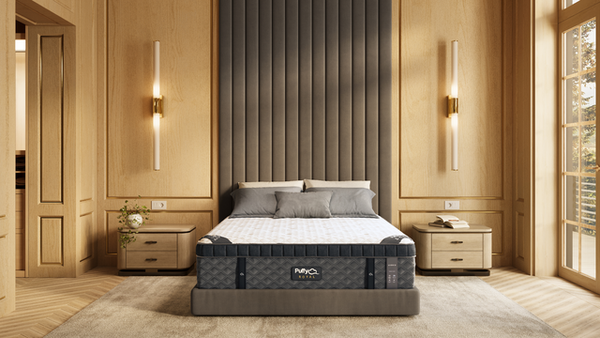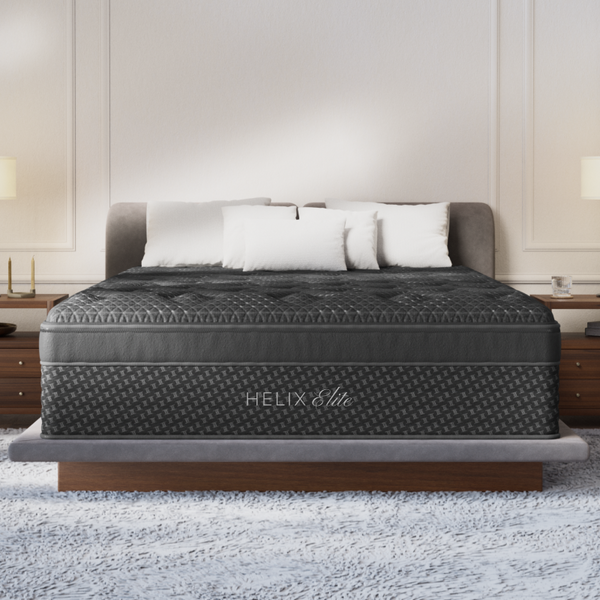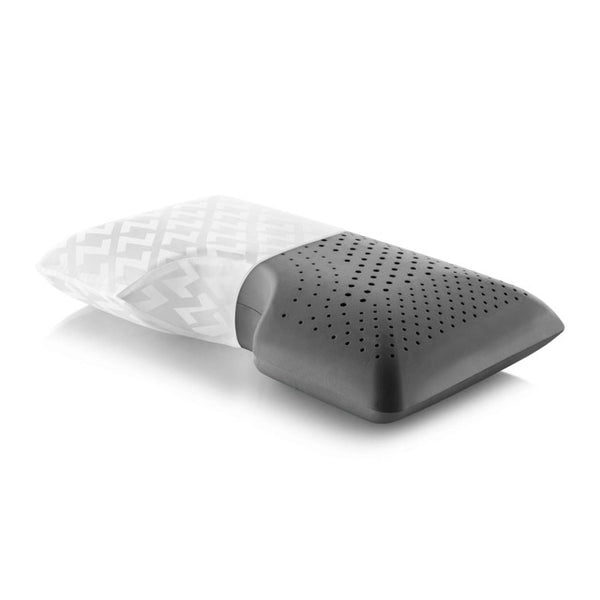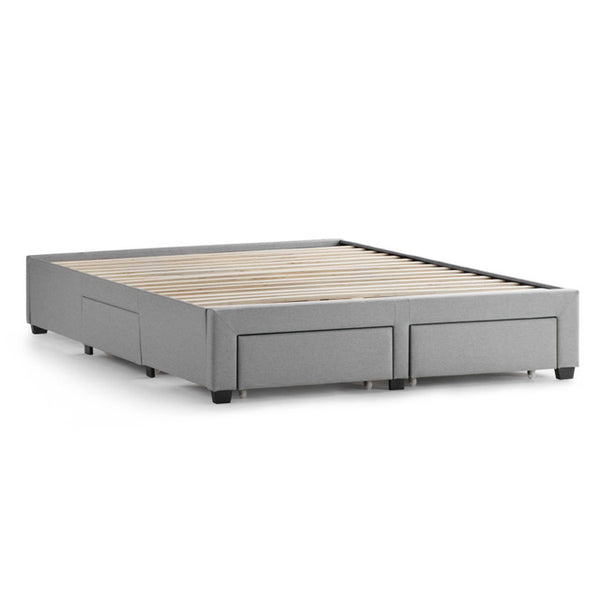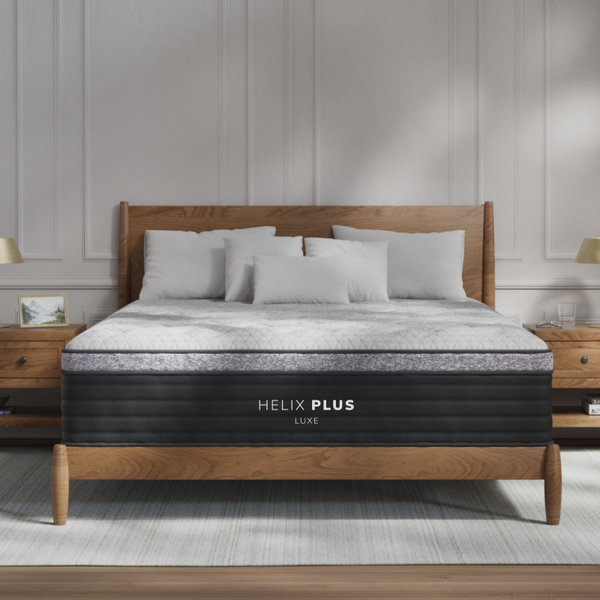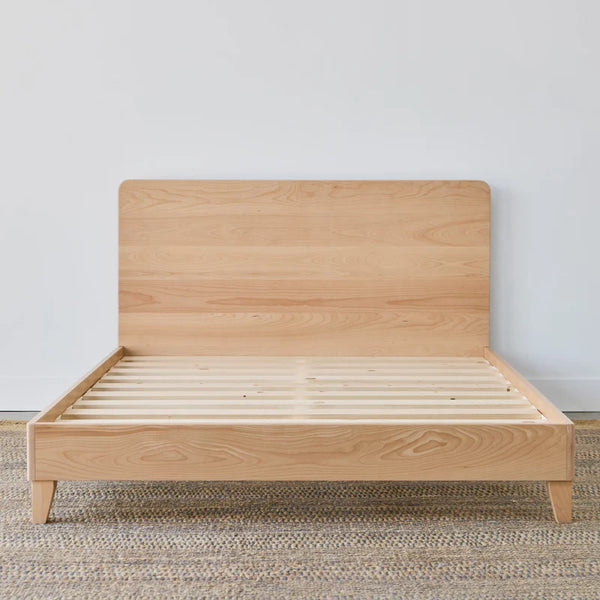
Overview
Create a sleep-friendly environment by optimizing lighting, managing sound, maintaining the ideal temperature, choosing comfortable bedding, decluttering your space, adding personal touches, establishing a sleep routine, balancing technology use, and transforming your bedroom into a sanctuary for relaxation. Small changes can lead to improved sleep quality and overall well-being.
Frequently Asked Questions
1. Why is a sleep-friendly environment important?
2. How can I optimize lighting in my bedroom for better sleep?
3. What is the ideal bedroom temperature for sleep?
4. What are some effective ways to reduce noise distractions while sleeping?
5. How can I personalize my bedroom to enhance relaxation?
A restful night's sleep is crucial for overall well-being, and the bedroom plays a significant role in achieving that blissful slumber. As we explore how to create the ultimate bedroom environment for sleep, we’ll delve into key elements, from lighting and sound to comfort and decor. Let’s unlock the secrets to crafting a personal haven that invites relaxation and rejuvenation.
The Importance of a Sleep-Friendly Environment
Did you know that the environment in which you sleep can significantly impact the quality of your rest? A well-curated bedroom environment can promote deeper sleep, improve mood, and enhance cognitive function. Here’s how you can utilize specific aspects of your room to foster better sleep.
1. Optimal Lighting for Sleep
Understanding Circadian Rhythms
Your body operates on a natural 24-hour cycle known as circadian rhythms. These rhythms are influenced by light exposure, so controlling lighting in your bedroom is key. In the evening, dimming the lights and utilizing soft, warm hues can signal your body that it’s time to wind down.
Blackout Curtains
Another critical factor is blocking out unwanted light from outside. Blackout curtains are an excellent addition to your bedroom, as they prevent streetlights, moonlight, or early morning sun from disrupting your sleep. Opt for heavy fabrics that effectively filter out light.
2. Soundscapes for Relaxation
Eliminate Noise Distractions
External noises can be a significant barrier to achieving restful sleep. Consider ways to minimize disruptive sounds. From investing in soundproofing materials to rearranging your furniture to block external noise, creating a quieter space is essential.
Soothing Sound Machines
Incorporating sound machines or soothing background noise can help drown out distracting sounds and lull you into a state of relaxation. White noise, nature sounds, or gentle melodies can facilitate a calming atmosphere, encouraging your body to relax and sleep more soundly.
3. The Ideal Temperature
Finding the Perfect Balance
The temperature of your bedroom can profoundly impact your sleep quality. Generally, a cooler room is more conducive to restful sleep, with most people finding comfort at around 60 to 67 degrees Fahrenheit. Experiment with your thermostat, and consider investing in breathable sheets and comforters that help regulate your body temperature.
Using Fans or Air Conditioners
If you tend to feel warm while sleeping, using a fan or air conditioning unit can help keep the air circulating and maintain an ideal temperature. This not only promotes comfort but also helps block out noise, contributing to a peaceful sleep environment.
4. Comfort is Key: Bedding and Pillows
Choosing the Right Mattress
At the core of every comfortable sleeping experience is a quality mattress. It’s crucial to invest in a mattress that supports your preferred sleeping position and provides adequate pressure relief. Whether you lean towards memory foam, latex, or innerspring, ensure that your mattress meets your comfort needs.
The Importance of Quality Bedding
Equally significant are your sheets, blankets, and pillows. Opt for high-quality materials that promote breathability and comfort. Cotton and bamboo are excellent choices as they wick away moisture and provide a soft touch against your skin.
Pillow Positioning
Don't underestimate the significance of your pillows! Choosing the right pillow can alleviate neck and back pain, enhancing your overall sleep experience. Depending on your sleeping style—back, side, or stomach—a differently shaped pillow may be warranted.
5. Decluttering Your Sleep Space
The Power of Minimalism
A cluttered bedroom can lead to a cluttered mind. Creating a serene and calming bedroom environment often starts with decluttering. Remove any items that don’t belong in your sleep space or disrupt its tranquility. Keep your nightstand free from excessive belongings, allowing for a peaceful atmosphere.
Incorporating Storage Solutions
Using stylish storage solutions can aid in maintaining a neat and tidy bedroom. From under-bed storage bins to decorative baskets, find creative ways to store belongings out of sight. A clutter-free atmosphere not only looks appealing but also promotes relaxation.
6. Personal Touches for Serenity
Inviting Aromas
Aromatherapy can enhance your sleep environment remarkably. Consider using essential oils like lavender, chamomile, or sandalwood, known for their relaxing properties. Diffusers or scented candles can add calming fragrances to your room, making it a true sanctuary.
Decor That Soothes
Select your bedroom décor carefully. Muted colors and soft textures can create a calming visual environment. Incorporate elements that speak to your personality, but keep it simple and serene. Soft throws, comfortable rugs, and elegant wall art can all contribute to a blissful atmosphere.
7. Establishing a Sleep Routine
Create a Consistent Sleep Schedule
Consistency is vital for quality sleep. Try to go to bed and wake up at the same time every day, even on weekends. This consistency trains your body and reinforces a natural sleep-wake cycle. Pair this schedule with pre-sleep rituals to signal that it's time to wind down.
Pre-Sleep Rituals
Engaging in a calming pre-sleep routine can signal your body to prepare for rest. Consider activities such as reading a book, listening to soft music, or practicing mindfulness and meditation. These activities create a healthy transition from wakefulness to sleep.
8. Technology and Sleep: Finding Balance
The Impact of Blue Light
Excessive screen time can interfere with your ability to fall asleep. The blue light emitted by phones, tablets, and computers can suppress melatonin production, making it essential to limit screen time before bed. Decide on a specific time to unplug from technology—typically, an hour before bedtime.
Smart Bedroom Devices
On the flip side, many smart devices can enhance your sleep experience. Consider using sleep trackers or smart alarms that adjust based on your sleep cycle, offering you a more restful night. Just ensure that these devices don’t add unnecessary distractions to your sleep environment.
9. Making Your Bedroom a Sanctuary
Encouraging Relaxation
Ultimately, your bedroom should be a sanctuary for relaxation and rejuvenation. Creating a space that promotes sleep involves paying attention to details, from décor and furniture to scents and sounds. Each element can work harmoniously to support your pursuit of restful sleep.
A Personal Retreat
Your bedroom should reflect your unique sense of style while embodying the calming presence needed for a restful retreat. Embrace the layout and design features that make you feel most at ease, ensuring that your personal touches create a welcoming, tranquil haven.
The Transformation Awaits You
With the insights shared above, you have everything you need to create the ultimate bedroom environment for sleep. Remember, it’s not just about the items within your space; it’s about crafting a sanctuary that nurtures relaxation and peacefulness. By making small changes to your bedroom, you can transform it into a haven for restorative sleep and improved well-being. Embrace the journey and make every night’s sleep a step towards revitalization!

